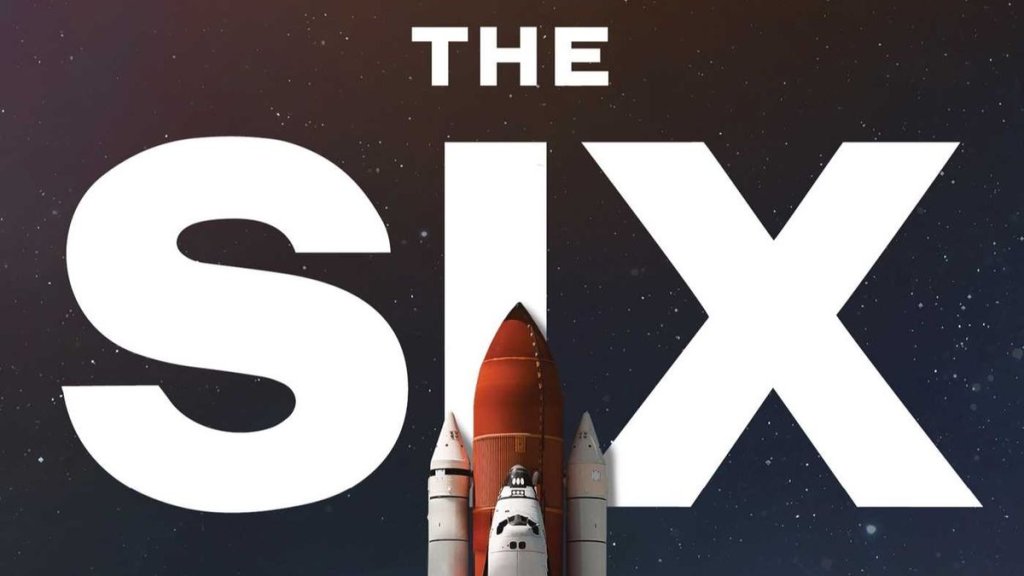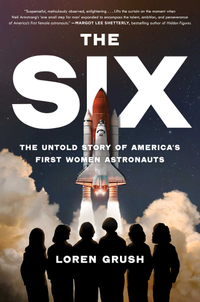
Learn the true stories of NASA’s 1st women astronauts in new book ‘The Six’ (exclusive) (Image Credit: Space.com)
NASA changed forever in 1978 with the addition of new kinds of astronauts.
That year, NASA accepted women and people of color into the astronaut corps for the first time, and the new book “The Six: The Untold Story of America’s First Women Astronauts” (Scribner, 2023) by Loren Grush shares the true firsthand stories of the female pioneers in that group. Grush’s book focuses on the stories of astronauts Sally Ride, Judy Resnik, Anna Fisher, Kathy Sullivan, Shannon Lucid and Rhea Seddon, while also talking about the decades of discrimination other women pioneers in space faced before their selection.
Grush did 100 hours of interviews and countless more hours of research, amid the early days of the coronavirus pandemic, to put together their story. She shared some of her findings with Space.com in an exclusive interview.
Related: Pioneering women in space: A gallery of astronaut firsts

The Six: The Untold Story of America’s First Women Astronauts | $27.01 on Amazon
Space journalist Loren Grush uncovers the stories of the first six women NASA astronauts through archival research and 100 hours of interviews. Learn about the lives of Sally Ride, Kathy Sullivan, Judy Resnik and other women astronaut pioneers.
” data-widget-price=”{“amount”:”27.01″,”currency”:”USD”}” data-widget-type=”deal” data-render-type=”editorial”>
Space.com: Before you took on this book, what did you think was missing from the publicly known stories of the Six at that time?
Also, through researching this book, I learned a lot about the [astronaut] selection process. That really surprised me, in terms of picking how the women flew and in what order. That opened up all these “What if?” questions in my mind. I realized that it easily could have been any one of the other five women who became the first American woman in space [rather than Ride]. So I think it was important to talk about the rest of the five women, just because the historical order could have been so different.
Space.com: I guess it also might shade our perceptions of looking at Sally Ride, as incredible of an individual she was. But in the book, especially with the questions that she was being asked by reporters, we saw how much pressure that she was under. But there were other people (at NASA) that understood that from the inside. Is that something you were trying to show through the story?
If you look at when they were first presented as a group to the public, when they [NASA] offered up the astronauts for interviews, all of the women were bombarded. They [and the first Black astronauts] were staying at NASA until late in the evening, while the other new astronauts — the white men — got to go home early because nobody really wanted to talk to them. I think that was a harbinger of what was to come, because it really showed how fascinated with the women that the press and the media were.
What was surprising was that, from the people I spoke to, it seemed like it didn’t really sink in for Sally, how monumental that selection was. She was mostly excited that she was going to space, but I don’t think it didn’t hit her until she came back. She realized how big of a moment that this was for history, and America. She dealt with it in a difficult way, and she ultimately sought therapy for it. But I think overall that they, NASA, knew how big of a milestone this was going to be.
Space.com: Exactly. I was wondering — this is more of a personal question for yourself — but as a woman reporter, and also as a person reporting in what I hope is a more diverse era where we have more ethnicities and more types of people that are reporters, what were your reactions as you were reading about how it was in the 1970s and 80s? Were you reflecting on how reporting practice may or may not have changed today?
When they were first selected, someone asked if Shannon Lucid’s three kids were considered during her selection process. Imagine asking that question today. We would be escorted out of the room. It really was an eye-opening experience to hear how the press talked about the women. Even when they were announced, my mouth dropped open. There was one announcement I watched on TV, and it listed out their names, their ages and their marital statuses. The fact that they felt like that was relevant information at the time was mind-blowing to me. I really did get a crash course education on how not to do my job.

Space.com: Yeah, you’re also training me about how not to do my job. Along that same theme, often when I’m speaking with people at NASA today, I hear from them that diversity is so important in their decision-making to help with safety and other things. With that in mind, I was really interested in the latter part of your book, talking about the space shuttle Challenger disaster (in 1986) and about the roles that everybody played. Not just Sally Ride, who was on the (investigative) board, but also the other women’s contributions. Can you talk a bit about their key roles, and how that might have helped with future space missions?
In terms of the other women, they had roles too. One of the big things after Challenger was streamlining all of the data and the procedures that they had. Anna and Shannon were very involved in that process.
Challenger is also pretty well-known for having changed the course of NASA. It was such a big wake-up call for the space agency. They completely re-evaluated their procedures: how they made decisions in terms of whether to launch, and what they accepted in terms of deviant behavior. Also, they added many more safety protocols. For instance, there was the addition of pressure suits in the shuttle cockpit. I’ll be honest: I was pretty shocked that they didn’t fly in pressure suits. Having covered space, I’d considered that that was always the case; you always flew with some kind of pressure suit.
The Challenger accident was really the end of a chapter (in spaceflight), and that’s ultimately why I chose to end the book with it. I felt like it stopped one era of the space shuttle program that included the first six women, and it started a new one. It really paved the way for a new generation of astronauts and women who came on board in the years afterward.
Related: NASA’s space shuttle program in pictures: A tribute

Space.com: Were there any key moments in your research where you were finding that you were uncovering something that made your book change a bit in front of you?
But uncovering those interpersonal dynamics: I wouldn’t say it’s shocking, but they were surprising, and ultimately relatable when I did uncover them. I feel like any one of us, if we were in a competitive situation like that, we would also desire to be the first to fly — or at least to go early. I think that’s a very relatable human experience.
Space.com: For sure. Towards the conclusion of the book, you pointed out that each one of the Six deserves their own book. That’s if they don’t have one already, which many of them do. But if you were to try and pick one for a future book, do you have any preference or any ideas about who you might want to go with first?

Space.com: Was there anything else you wanted to add to our discussion about your book, the research, anything else that’s relevant?Space.com: Was there anything else you wanted to add to our discussion about your book, the research, anything else that’s relevant?
One of the other things I say all the time, that I really love, is that they are inspiring to me. They are so different and so unique. They really show that there isn’t one resume to be an astronaut. There were medical doctors, chemists, astrophysicists, electrical engineers, oceanographers. It shows to me that you can get to space in any possible scenario, any way that you want.
You don’t even have to dream about [space] your whole life. Some of them didn’t even know they wanted to be astronauts until they saw the selection process. That’s the takeaway for me. I feel like I didn’t know I wanted to be a space reporter when I was young. That definitely evolved over time.
So for people who might be intimidated by others who have a calling, or know what they want to do, just look at the Six. Not all of them knew what they wanted. Look where they turned up.
This interview has been edited and condensed for length.









